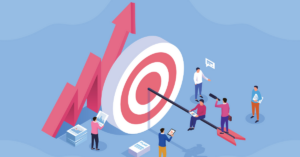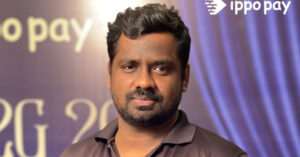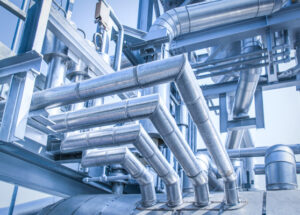Mastercard, even though it is now banned in India for dual record maintenance, its prominent reach worldwide has kept us following the company (1). Recently, the company announced (2) that it will stop using magnetic stripes on its debit and credit cards over the next ten years as the industry is moving towards more convenient and secure payment alternatives such as contactless payments and chips. Mastercard claims it will be the first payments network to end the technology, dating back to the 1960s.
According to Mastercard’s announcement, it will start the transition in 2024, when regions like Europe will no longer need the magnetic stripe on new cards. In countries like the USA, where chip payments adoption has been slower, the company will start the transition in 2027. The company will no longer issue cards with a magnetic stripe by 2029 and predicts that they will be completely gone by 2033.
Meanwhile, in India, cash is still the king, and the usage of debit and credit cards is stagnant; however, the popularity of e-wallets, UPI, and digital payments are on the rise (3).
As a collective society, the way we make payments with one another is ever-evolving. A lot has transformed over the past century in the way we pay for things. It is safe to say that we have long moved on from metal coins and animal hide. Today, we have made some serious cash and economic systems with cheques, cards, smartphones, and cryptocurrencies. Now, governments are also coming up with digital money (4).
And the news has made us wonder about the future of payment technologies. It sure raises questions about how else we can pay for everyday goods and services. Will it be via wearables? Biometrics? Some super I.D.? Telepathy?
Today, let’s take a look into how humanity used to pay in history, where we are now, and the possible future payment methods.
The History of Payment
Even though we don’t know how, when, or who invented money, most historians believe it goes way back before we invented the wheel as early as 500 B.C. At that time, maybe our sack of barley was counted as more than some spare change, and it could have counted as some serious cash if we had some metal pieces or animal hide.
Before we go to where we are now and where we can go from here, we believe it is worth mentioning what payment methods humans have used over time.

Barter (from the very beginning to 3000 B.C.)
It is the most basic form of payment. Barter is an exchange of goods between two individuals, each having something of value to the other (5).
Barley (3000 B.C)
Barley is probably the first kind of commodity money (6). While this payment method had its own charm, there are still considerable doubts about it, such as, who set the standard for the barley quality?
Precious Metals (700 B.C.)
Records suggest that the first coins were minted in 7 B.C. in India, Anatolia, Greece, and China, and they quickly became popular as the first legal tender ever reported.
Bank Notes (17th Century A.D.)
This payment mode hardly needs any explanation. It is cash, pure and simple. Even though it is recording a gradual decline, we are still using paper money worldwide. Cash, however, is pretty cumbersome for any purchases larger than our typical grocery bill. Today, cash is becoming virtually unnecessary and useless (7).
Cheques (17th Century A.D., Part 2)
By this time, payment via cheques had become a popular payment instrument in several parts of the planet. At that time, they used to be handwritten documents bearing the sign and seal of the issuing bank. (Writing this part constantly reminded us of the movie Catch Me If You Can)
Present Day (21st Century)
It gives us pleasure and pride to write about how much our payment methods have evolved. Today, the world has become an oyster when it comes to paying for everything and anything. We have so many payment methods now. Below we have listed some of the most basic ones.
Debit Cards
Debit cards are little plastic pieces embedded with technologies like EMV chips and radio that allow us to make secure and contactless payments. Most varieties of debit cards function in the same way: the money we spend via chip and pin, over the phone, contactless, or online, gets deducted straight from our bank accounts.
Until we came up with mobile payments, debit cards were considered the best alternative to carrying cash (8).
Credit Cards
Everything is similar between credit cards and debit cards, except for one key difference. With credit cards, we pay with credit, the money we can pay back to the lender later.
While they are useful for splitting the cost of higher value purchases, they come with the risk of spending money we don’t have and then struggling to repay (9).
Prepaid Cards
Again, prepaid cards are pretty much like debit cards, and we can use them as an alternative to carrying cash. With prepaid cards, we also don’t need to have a bank account. We can load them with cash and use them when needed.
They also carry the flexibility of other plastic card options without the risk of running up debts. But, they have associated user fees (10).
Contactless Payments
Contactless payments are popular today because they are quick and easy. We can tap our cards or phones on the card machine, and voila! The payment is made.
Contactless payment uses near-field technology, making it vulnerable for bad actors who can use someone else’s card to spend money. Hence, it is recommended to put a limit on contactless transactions (11).
UPI
The Unified Payments Interface is a popular method in India to transfer money between bank accounts across a single window to pay an individual, merchant, or service provider using our mobile phones. The UPI payment works based on IMPS.
While we can use UPI to make payments easily and safely, it has cons like cybersecurity threats and payments delays. Also, it may not work properly in case of low internet connectivity (12).
Electronic Bank Transfer
Electronic bank transfers is an excellent payment option for merchants and businesses as it allows us to transfer and receive large payments with no to minimum fees. They are also more convenient compared to cheques or cash.
However, they have a long processing time, and often we need to wait several hours to days before we get the money into our account (13).
Cheques
Cheques are similar to paper vouchers linked to our bank accounts. They are typically used to pay bills or tradespeople.
While using cheques is straightforward and doesn’t have any extra charge, it is up to the person writing the cheque to ensure it is written correctly and there is enough money in their account to cover it. Also, we should never accept a cheque from anyone we don’t trust (14).
Similar to cash, cheques are also becoming a dying breed, and their prevalence is dropping year on year (15).
Cash
Until the pandemic, cash was still our most frequently used payment method, most commonly used for day-to-day lower-value purchases. Cash is quick and convenient to use.
However, getting cash is becoming less convenient with finding an ATM (some of which charge), getting changes, and heading to the bank with each passing year.
Cryptocurrencies
Cryptocurrencies have quickly become popular among tech-savvy individuals as a payment method because of more security, low fees, and fast transactions.
While they hold an interesting potential as a means for quick, cheap, and global payment transactions, cryptocurrency is not in the mainstream yet as a payment method largely due to its volatile nature.
CBDC
Countries are launching CBDCs as a new payment method and a legal alternative to private cryptocurrencies. While most countries are still investigating its use and rolling them out in a phased manner, they have a bigger chance of being used as a mainstream payment method than cryptocurrencies.
However, they are still at cybersecurity risks and becoming a mess if countries fail to implement it properly, like choosing the wrong model, improper design, lack of comprehensive policy, etc.
Read Also: Can India’s CBDC Vision Prevent Bitcoin’s Ascendance?
What’s Next?
The Internet of Things
The 5G rollout and increased penetration of IoT are changing the world as we know it. The POS, point of sale (16), is no longer a destination, and it is whenever and wherever the customer wants it. We have found several new ideas that will shape the future of payments (17).
Wearables
Today, wearables offer more ease and utility than ever, which is beyond tracking fitness and health. Thanks to tokenization, smartwatches have started allowing people to enhance their on-the-go lives with easy and secure contactless payments.
There are anticipations that in the future, payment technologies will be available in a range of accessories that will enable us to communicate, plan, and play without having to reach for over phones or wallets (18, 19).
Where are the Opportunities?
You can start capitalizing on this trend by creating ultra-thin batteries, minimizing or waiving the need to recharge.
You can also make and sell IoT-enabled clothing, accessories and create a new world of smart fashion, packed with technology that would make what we wear comfortable, functional and reduce our burden of multiple screens. Some of the existing players in the market include Apple Watch, Jawbone UP4, Ringly, bPay, Lyle & Scott, and The Disney Magic Band.
Cars
Our cars are getting smarter with driving assistance technologies like alertness, mapping, and traffic compliance. With equal emphasis on safety and convenience, the contactless payment technology would allow us to make proximity payments like gas, parking, drive-throughs without ever having to leave our car seats or open our car windows (20).
Opportunities:
You can collaborate with car companies, payment providers, and merchants to offer car-connected payments. Some of the existing market players include Pulita; you can create a similar system. Or, you can also come up with software to ease in-built fraud detection systems for payment, car companies, or individual users.
Appliances
Cloud-based smart speakers, which use voice control to manage all our connected smart appliances, offer us the information we need to make easy communications and organize our lives. Our connected homes’ efficiency and convenience are already changing our lives, from customizing the lighting and temperature to shopping and managing personal finances.
There are envisions for the future that IoT will provide our smart homes into the realm of true intelligence. Future smart home appliances will build a more personalized and secure living environment and make a home that anticipates our needs. These future smart homes will remember our past purchases to preferences, paying bills, grocery shopping, travel planning, gift-giving, and suggest relevant actions and items (21, 22).
Smart Cities
https://www.youtube.com/watch?v=9HHW0mj2EDc
There are anticipations that our future smart cities will be fully integrated systems. It will create a responsive world that will benefit the government, people, and environment. IoT-enabled smart payment technologies will increase government services’ efficiency and allow citizens to smart pay for everything from public transportation to taxes (23).
Biometrics
It is an innovation that has already become a part of our daily lives. Today, our smartphones have fingerprint scanners, facial recognition, and even iris scanning (24). There are anticipations that we will move forward in this direction with vein pattern recognition, heartbeat analysis, and voice security into daily use (25).
In the future, we believe that such innovations could do away with passwords and PINs for good and make our payments safer, faster and more personal than ever.
Notably, in some countries like Sweden, people use subdermal implants, microchips embedded into their hands to pay for their commutes (26).
Invisible Payments
Businesses like Uber and Deliveroo are already working towards payment invisible by offering their users a seamless transaction experience.
“Just Walk Out” stores are already prevalent in multiple countries, and in the future, we can see more businesses piloting their version of check-out-free technology.
Opportunities
Notably, in 2018, Barclaycard made an app that allows people to “dine and dash” to pay for a meal without having to get the waiter’s attention and the bill, laying the foundation for “invisible” seamless payment (27).
You can also use similar patterns for your business to make the payment process as fast and frictionless. People no longer want to queue up to pay anymore; they want to pay before and even after collecting their product.
What Are Some Near-Future Payments Trends?
- All payments will be from mobile (28)
- The rise of the mobile self-checkout (29)
- The merger of payments and loyalty (30)
- The bank accounts will become a commodity (31)
- A cashless society post-pandemic (32)
A.I. and Machines Learning Will Play a Key Role
There is one primary feature by which we measure any payment method: security. No payment method or technology will flourish if it doesn’t offer high security, as we will continue to use the safest payment option available.
Even today, we prominently use A.I. for detecting and preventing security breaches. Banks have also turned to machine learning to keep up with the constantly evolving space, process the sheer amount of data, and instantly detect possible threats.
Today, our A.I. systems are getting better at identifying fraud in each transaction. For instance, we receive an automated text message from our banks to confirm whether we completed payment or it was fraudulent.
We believe that A.I. and M.L. will have a greater role in improving our new-age payment methods’ security, functions, and processing (33).
Wrapping Up
Whether it is about technological advancements or demographic shifts, there are multiple reasons behind the emergence of new payment methods. In our present hyper-connected global economy, there will inevitably be innovations in the payment methods, requiring everyone, including businesses and consumers, to adopt new technologies.
While some may argue that we need to be more conservative about what we can expect, we believe that there are endless possibilities in the longer term.
But despite all these, the bigger question remains: can we evolve beyond money? Stay tuned for more updates.
What other exciting future payment technologies and related business opportunities have we missed? Let us know in the comment section!











